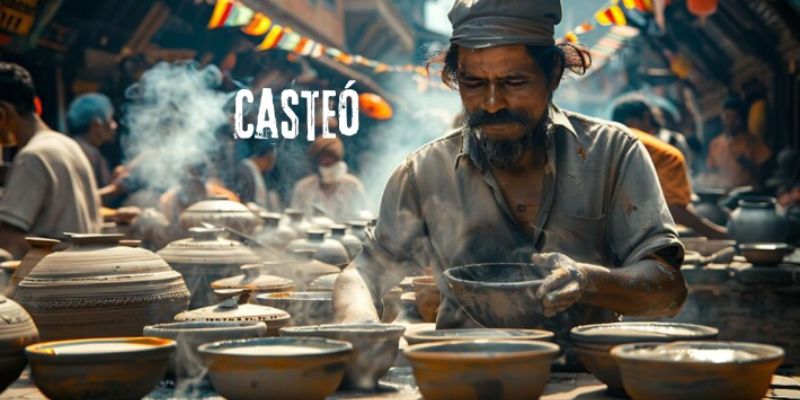Casteò is a term many might find unfamiliar, yet it holds significant importance in understanding cultural and social structures. Caste’s complexity and significance often lead to misconceptions and lack of appreciation for its rich heritage and influence on modern society. Without a clear grasp of casteò, we miss out on valuable insights into social hierarchies, legal frameworks, and cultural dynamics.
To bridge this gap, this comprehensive guide on casteò aims to provide a clear and thorough understanding of its origins, evolution, and current relevance. By exploring various aspects of casteò, including its historical context, cultural impact, and practical applications, we can better appreciate its significance and influence.
The Origins of Casteò
What is Casteò?
Casteò refers to a system or concept deeply rooted in history, often associated with social hierarchies and structures. Its origins are complex and multifaceted, deriving from ancient civilizations that used Casteò to organize and define societal roles and responsibilities. Understanding casteò involves delving into its linguistic roots, cultural significance, and interpretation and reinterpretation over time.
Historical Context of Casteò
The historical development of casteò is closely tied to the social and cultural evolution of various ancient societies. Key events and figures have shaped caste evolution, influencing how it is perceived and practiced today. From ancient legal codes to medieval social structures, the history of Casteò reflects broader trends in human civilization. By studying these historical contexts, we gain a deeper appreciation of the role caste plays in shaping social hierarchies and community dynamics.
Understanding Casteò in Modern Times
The Role of Casteò Today
Caste continues to influence various aspects of life, though its role has evolved significantly. Today, casteò is often discussed in the context of cultural identity, social mobility, and legal rights. Its relevance can be seen in how communities organize themselves, maintain social norms, and individuals navigate their social environments. Understanding caste’s role today requires an exploration of both its enduring aspects and the changes it has undergone in response to modern values and laws.
Common Misconceptions About Casteò
Modern discussions persist with misconceptions about caste. One common myth is that casteò is a rigid and unchanging system, when in reality, it has evolved and adapted over time. Another misconception is that Casteò only affects certain regions or cultures, but its principles can be found around the world. Clarifying these misconceptions helps in understanding the true nature of Casteò and its impact on different societies.
The Cultural Impact of Casteò
Casteò in Popular Culture
Casteò is often represented in media, literature, and arts, reflecting its cultural significance and shaping societal narratives. Films, books, and artworks explore caste themes, highlighting both its historical roots and its contemporary implications. These representations provide insight into how casteò is perceived and interpreted in popular culture, influencing public opinion and cultural discourse.
The Influence of Casteò on Social Structures
Caste influences social structures profoundly, affecting everything from family dynamics to political systems. Caste dictates social status, occupational roles, and community relationships. By examining how casteò shapes social hierarchies and influences power dynamics, we can better understand its role in maintaining social order and addressing social inequalities.
Legal and Ethical Considerations
Legal Framework Surrounding Casteò
Caste legal aspects involve various regulations and laws designed to address its impact on society. Different countries have different approaches to managing and legislating casteò, reflecting their unique historical and cultural contexts. Understanding these legal frameworks helps in appreciating the complexities involved in regulating Casteò and the challenges in enforcing these laws.
Ethical Implications of Casteò
Caste ethical considerations are complex and contentious. Debates focus on equality, justice, and human rights, questioning how casteò systems align with modern ethical standards. By exploring these ethical implications, we gain insight into the moral challenges posed by caste. We also gain insight into the ongoing efforts to reconcile traditional practices with contemporary values.
Case Studies and Examples
Notable Case Studies Involving Casteò
Case studies provide concrete examples of how casteò operates in different contexts. These studies highlight both the positive and negative aspects of Casteò , offering a balanced perspective on its impact. Notable case studies might include historical events, legal battles, or cultural milestones that illustrate caste systems’ complexities and consequences.
Lessons Learned from Case Studies
Analyzing case studies allows us to draw lessons and insights that inform future practices and policies. By understanding what has worked and what hasn’t, we can develop more effective strategies for addressing caste challenges. These lessons are crucial for policymakers, educators, and social activists working to promote equality and social justice.
Practical Applications of Casteò
Implementing Casteò in Business and Technology
Casteò principles can be applied in various fields, including business and technology. In business, understanding Casteò can help create more inclusive workplaces and addressing diversity issues. Technology can inform the design of algorithms and systems that promote fairness and reduce bias. Exploring these applications demonstrates caste’s practical relevance in modern industries.
Best Practices for Using Casteò
To effectively incorporate casteò into different practices, it is essential to follow best practices that ensure fairness and inclusivity. These might include strategies for inclusive decision-making, equitable resource distribution, and respectful cultural representation. By adhering to best practices, we can harness caste’s positive aspects while mitigating its potential drawbacks.
The Future of Casteò
Emerging Trends and Predictions
Caste’s future will likely be shaped by emerging trends and global developments. As societies become more interconnected and values evolve, casteò systems will need to adapt to new realities. Predicting these trends helps in preparing for future challenges and opportunities, ensuring caste continues to play a constructive role in society.
Potential Challenges and Opportunities
Caste evolution will present both challenges and opportunities. Challenges might include resistance to change, cultural clashes, and legal hurdles. Opportunities could involve greater social cohesion, enhanced cultural understanding, and more equitable social structures. By identifying these challenges and opportunities, we can develop strategies to navigate caste’s future effectively.
Conclusion
Casteò deep-rooted significance and evolving impact on society. By exploring its origins, cultural implications, legal considerations, and practical applications, we gain valuable insights into this complex system. As we look to the future, it is crucial to navigate the challenges and seize the opportunities presented by casteò, ensuring that it contributes to a more equitable and inclusive world.
FAQs
What is the origin of casteò?
Casteò originates from ancient social and cultural systems that organized society hierarchically.
How does casteò influence modern society?
Casteò influences modern society by shaping social hierarchies, cultural identities, and legal frameworks.
Are there legal regulations concerning casteò?
Yes, various legal regulations address casteò, aiming to promote equality and protect human rights.
How can businesses benefit from understanding Casteò?
Businesses can benefit by fostering inclusivity, improving diversity, and creating fair practices that enhance their corporate culture.
Read more : Dive Into BetterThisTechs Articles For The Latest Insights!







